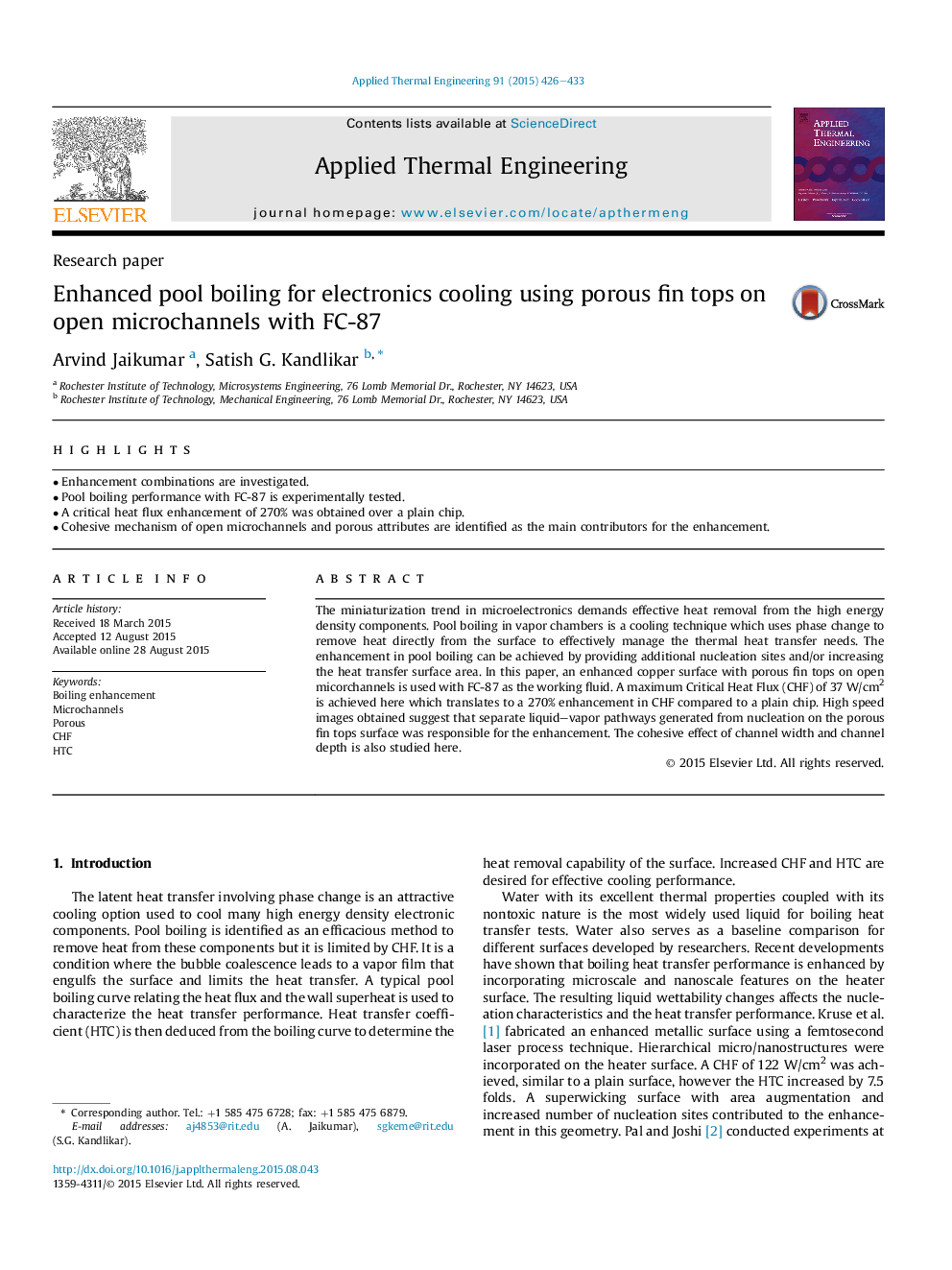| Article ID | Journal | Published Year | Pages | File Type |
|---|---|---|---|---|
| 645087 | Applied Thermal Engineering | 2015 | 8 Pages |
•Enhancement combinations are investigated.•Pool boiling performance with FC-87 is experimentally tested.•A critical heat flux enhancement of 270% was obtained over a plain chip.•Cohesive mechanism of open microchannels and porous attributes are identified as the main contributors for the enhancement.
The miniaturization trend in microelectronics demands effective heat removal from the high energy density components. Pool boiling in vapor chambers is a cooling technique which uses phase change to remove heat directly from the surface to effectively manage the thermal heat transfer needs. The enhancement in pool boiling can be achieved by providing additional nucleation sites and/or increasing the heat transfer surface area. In this paper, an enhanced copper surface with porous fin tops on open micorchannels is used with FC-87 as the working fluid. A maximum Critical Heat Flux (CHF) of 37 W/cm2 is achieved here which translates to a 270% enhancement in CHF compared to a plain chip. High speed images obtained suggest that separate liquid–vapor pathways generated from nucleation on the porous fin tops surface was responsible for the enhancement. The cohesive effect of channel width and channel depth is also studied here.
